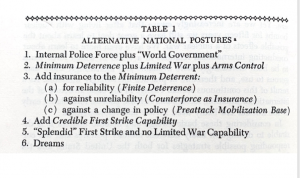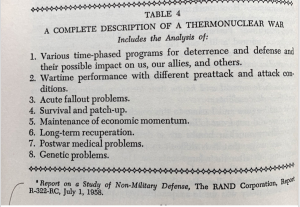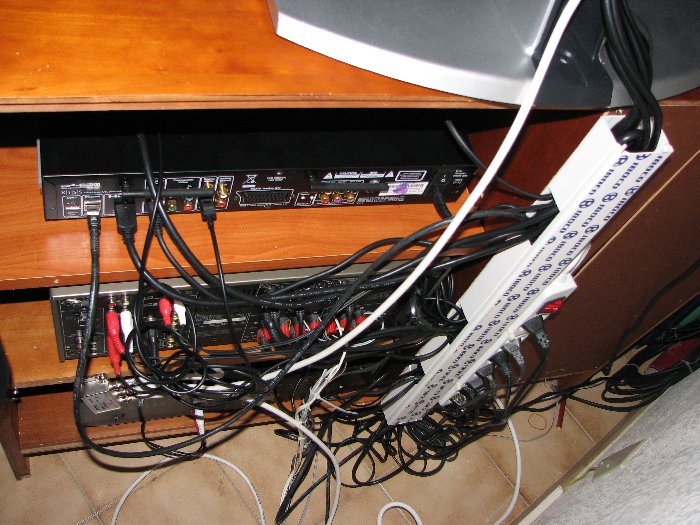It is common knowledge that armed forces are at the rooot of most of the techniques developed by the futurists. And one of the most famous one is probably scenario planning. Returning to the source of the method is therefore a good way to “refresh” our understanding of the role of narratives in future planning. And perhaps also a way to “decolonize” the future of its military source, assuming that there is another way to handle uncertainty than the highly centralized and planned approach of the US army from the 50s.
In the 1950s, a physicist named Herman Kahn was asked to help the US military to plan for a nuclear war. In order to tackle properly these difficult questions (« can Washington survive a thermonuclear attack ? ») he thought that data and facts would not be enough. So he decided to create a context by creating narratives. But according to A. Webb (2016), his problem was that he did not want the military to discount his work as science fiction, hence not a serious work. So he talked about it with one of his friend who was a Hollywood writer and that person convinced him to use the word « scenario » instead of « screenplay », which was to hollywoodish and not serious enough.
So this is to our knowledge the first time that the term « scenario » was used to write speculative work in order to prepare for plausible futures. Kahn then went on later to the RAND Corporation and implemented his approach there. A first key thing is that when we discuss about design fiction, most of the practionners dismiss the use of a quantitative approach on the basis that « futurists are always wrong, and statistics explain the past, not the future ». Well, anyone who thinks that should start reading Kahn’s 651 pages book « On thermonuclear war ». If the narrative aspect of it is truly amazing in its capacity to convey stunning messages regarding the consequences of a thermonuclear war, it is also deeply grounded into scientific and statistic research.
The book starts with the basic national postures as a key determinant of how the USA could react to a war.

National postures regarding a thermonuclear war
It then goes into the fundamentals of a thermonuclear war before trying to project any kind of scenario. For each of these 8 steps, kahn and his team detail specific conditions, consequences etc.

8 steps for a thermonuclear war
And in the middle of that, he will offer narrative descriptions of everything that could happen depending on each condition and for each step. Even though this work is 70 years old, it is a massive and extremely impressive piece of futurism. It shows how such an approach using « If this then that » allows to think the unthinkable and offers alternatives / strategies in order to prepare for it.
So why are currents scenarios so misleading? Perhaps an important issue is the fact that, precisely, they are not careful in describing the context as whole with a serious sense of potential causal relationships regarding the phenomenon that is analyzed. Some of these have the power to lead to counter-intuitive facts and, as such, they are a good way to prepare good scenarios, i.e scenarios that can provide alternatives to current perspectives of the future.
In a smart paper, dutch Franck Geels and Wim Smith (2000, “Lessons from failed technology futures”) presented a remarkable analysis of why mainstream scenarios tend to miss actual futures. One of the key issue they mentioned is that scenarios tend to minor the fact that people adjust themselves to new technologies. And in fact, people will not substitute old technologies. On the contrary, we always observe the co-existence of both, leading to less obvious behaviours than expected.

Everyday life : layers of different technologies, not a new one wiping the older ones
They also assume that new technologies will have a direct impact on behavior, but most of the time it seems to be a second order impact, with less clear implication. For instance autonomous cars will not make people work mostly at home, as stated in the 60’ and 70’s. And this simply because working at home is also source of major drawbacks related to other social and technological problems.
So trends and statistical analysis are absolutely relevant as long they are not only trend provider, but tools that can connect hidden variables to each others. And help us write unplanned futures.

